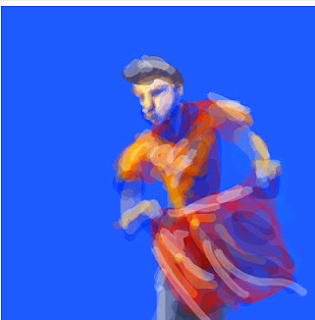Coming to the end of the project i wanted to try one last experiment to see if i could produce the same style in watercolour to that i use in my digital paintings. The painting was fun and i instantly found that my understanding of light and tone through the digital paintings was feeding into this work, my watercolour paintings in the past have been a bit naff. This piece, even though i am not completely happy with it, kind of surprised me.
I began the painting by laying down all the tones of the building ( this is actually a drawing from memory of a pub i saw in Bath . . . exaggerated a little) and being aware of what white space i needed to keep, no 'undo' option here.
The next stage was to paint in the highlights and shadows and this is where i found the watercolours lost out to the digital alternative. by going over areas with a wet brush again the definition in the areas of colour i had applied began to diminish and they blended together. You can see this best on the dark side of the building. What i would need to do in future is to cool the temperature and darken the first set of colours that i lay down so that the multiple tones remain distinguishable from each other. This way i would not have to apply a wash to create the shadow.
Colour alteration made in Photoshop. Increasing/ decreasing temperatures and repainting the sky.









.JPG)








































